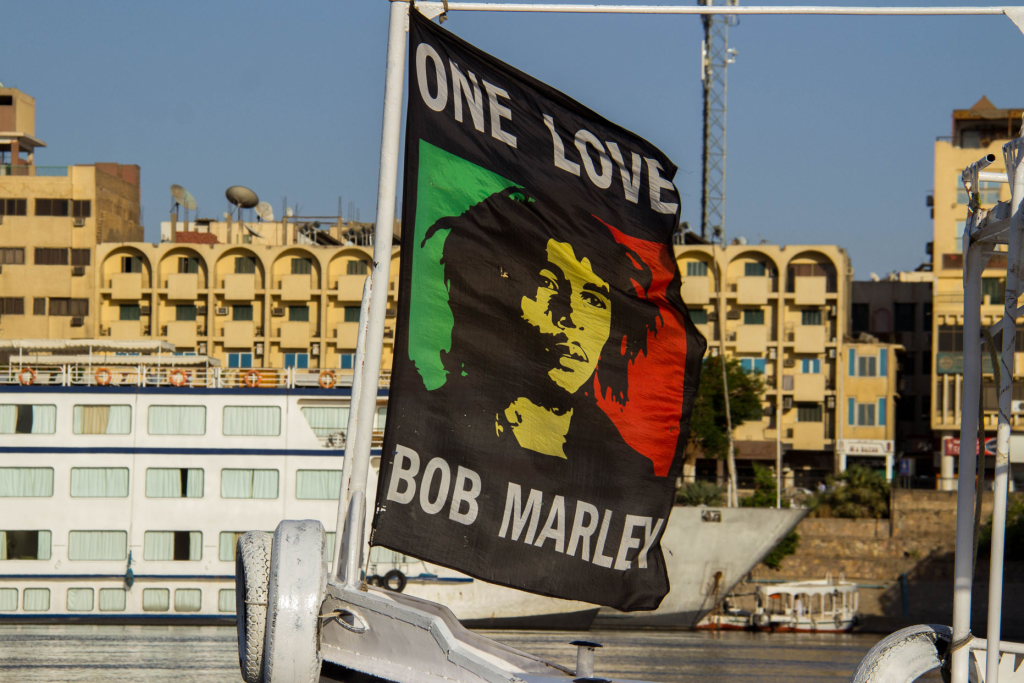
Zizo became a boatsman at the age of 10, pushing and pulling against the Nile’s tides under the scorching sun of Aswan, a coming-of-age tradition. Apart from it being a main source of livelihood and a generational profession among the Nubian community, steering a sailboat in the 1980s required a specific kind of motivation.
“As long as the sails were open and the boat was moving, we’d put on Bob,” says Zizo, and by Bob, he means Jamaican singer Bob Marley. The boat’s bunk was dubbed “Bob Marley Room,” where tourists could smoke marijuana. It was painted green and yellow — prominent in Jamaican and Marley culture — Zizo remembers with a smirk.
Bob Marley’s presence in the most southern province of Egypt extends far beyond Zizo’s sailboat. His images, songs and symbols are an integral part of the Nubian visual and auditory aesthetic. While the influence is sometimes very apparent, it can also be subtle and discreet. There are cafes and shops and even people who affect his resemblance conspicuously. Among the attractions are the “Bob Marley Guesthouse” and the multiple impersonators present across the different islands. But there are also traces that require more discernment, such as rasta hats in souvenir shops or Bob Marley flags on top of boats alongside national and football club flags.
Continue Reading : click New Lines Magazine

Leave a Reply